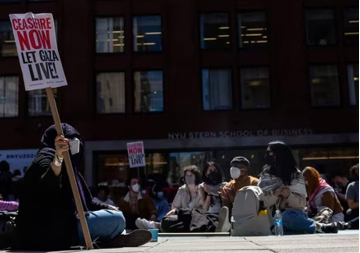
The National Crime Records Bureau (NCRB) published its annual report on crime in India for 2022 on 6 December 2023. The crime rate, an internationally accepted measure, is the total volume of crime per hundred thousand population during a calendar year. The rate of crime is a fair quantification of lawbreaking since absolute numbers of crime in large geographies with bigger populations are likely to show a greater volume of crime than the smaller ones. The figures calculated per hundred thousand population make size and population redundant and provide a symmetrical field, enabling a fair comparison among states, districts, and cities in the country.
The 19 metropolitan cities for which NCRB has provided separate data hold 8.12 percent of the national population as of 2022. However, their share of cognisable crimes is 14.65 percent. Similarly, these cities accounted for 233,114 cases filed under special and local laws (SLL), making 10.29 percent of all SLL cases. This seems to corroborate the widely acknowledged finding by criminologists that crime rates are much higher in larger cities than in smaller towns and villages. The reasons cited are more opportunities on account of greater access to wealth in cities, lower probability of recognition, detection and arrest and the attraction of larger cities to draw criminals from near and far. While this seems to hold good in absolute percentages for India’s largest urban agglomerations, some of the data does not always bear this out. This article refers to some of them.
The reasons cited are more opportunities on account of greater access to wealth in cities, lower probability of recognition, detection and arrest and the attraction of larger cities to draw criminals from near and far.
Delhi outstrips all other cities in terms of crime rate, standing at 1,832.6, which is 3.36 times the city average of 544. Jaipur (916.7), Indore (767.7), Kochi (626.7) and Patna (611.7) follow. Kolkata emerges as the most peaceful city with a low crime rate of 78.2. Chennai (211.2), Coimbatore (211.2), Surat (215.3), Pune (219.3), Hyderabad (266.7), Bengaluru (337.3), Ahmedabad (360.1), Mumbai (367.3), Kozhikode (397.5), Kanpur (401.4), Ghaziabad (418.0), Nagpur (516) and Lucknow (521) have all crime rates lower than the city average (544).
About murder in metropolitan cities, Patna tops the list with a murder rate of 5.2 murders per lakh population. Lucknow (4.5), Jaipur (4.3), Indore (3.3) and Ghaziabad (3.1) follow. Kolkata (0.2), Kozhikode (0.3), Mumbai (0.7), and Kochi (0.8) have all less than 1 murder per lakh population. As a percentage, the 19 urban agglomerations (UA) accounted for 7.12 percent of all nationwide murders, lower than their total average population percentage (8.12). The rate of kidnapping and abduction was highest in Delhi (34.2), followed by Patna (32.4) and Indore (31.1). Chennai (0.4), Coimbatore (0.4) and Kochi (0.9) had the lowest rates. Cities, as a percentage, scored higher than their population in kidnappings and abductions than the rest of the country (12.99 percent). Patna, Lucknow, Ghaziabad and Kanpur were the kindest to age. They had no recorded cases of crime against senior citizens.
Crime rates against women were the highest in Jaipur (239.3), Delhi (186.9) and Lucknow (161.4). Gender crime in 2022 marked a 12.3-percent jump over 2021. A total of 48,755 cases were registered in 2022; this figure was 43,414 in 2021. Coimbatore (12.9), Chennai (17.1) and Kolkata (27.8) emerged as the most women-friendly cities. Delhi recorded the most crimes against children (7,400), followed by Mumbai (3,178) and Bengaluru (1,578). Coimbatore (83), Patna (127) and Kochi (206) were at the bottom of the table. There were 3,996 cases registered in the 19 cities regarding crime against senior citizens, marking a 6.3-percent decrease over 2021 numbers. Delhi (1,313), Mumbai (572,) and Bengaluru (458) accounted for the most cases.
About murder in metropolitan cities, Patna tops the list with a murder rate of 5.2 murders per lakh population.
In the area of economic offences, a total of 40,760 cases were registered in the 19 metropolitan cities. This was a jump of 15.8 percent over 2021. Out of these, 88.4 percent of cases were forgery, cheating, and fraud. Here, cities as a percentage, were responsible for 21.07 percent of all cases. The record of cyber crimes was even higher, with 37.06 percent registration of crimes in cities. Cyber crimes also showed a huge upward trend in volume in these cities. A total of 24,420 cases were registered, which was an increase of 42.7 percent over 2021. The overall performance of India’s criminal system was not very encouraging. The conviction rate for major heinous crimes was poor. For murder, it was 42.5 percent, for rape 17.9 percent, and for kidnapping and abduction 38.6 percent.
Jaipur, Indore, Kochi, Patna, Mumbai, Surat, Ahmedabad, Bengaluru, Kanpur, Ghaziabad, Nagpur and Lucknow exceeded the average crime rate of their states. The exceptions are Kolkata, Chennai, Coimbatore, Pune, Hyderabad and Kozhikode. They have crime rates that are lower than the state average. The widely accepted theory that urban centres have a greater propensity towards crime is borne out in the case of 12 cities. However, six other cities, as cited above, do not support that widely held belief. Neither does the theory that larger cities would have a greater crime rate than the smaller ones hold. Kolkata, Chennai, Hyderabad, and Pune are among the eight largest cities in the country. However, as cited above, their crime rates are lower than some of the smaller ones like Patna, Jaipur or Indore.
While NCRB data is the most comprehensive set of data, it suffers from some data deficits. Firstly, all crimes are not reported by citizens. Secondly, police officers in some cases are known to practise what is called the ‘burking of crime’, a term indicating the practice of not registering an FIR (First Information Report) in the case of a crime that allows the local police officer to present a better picture about the position of crime than what actually exists. Thirdly, NCRB has practised the ‘principal offence rule’. This means that if there is a combination of offences in a single FIR, such as murder and rape, the offence would be counted in its more heinous content, that is murder. These three cited factors lead to a reduction in the total volume of reported crime.
It should be easy to collect and put together data generated by the 69 police commissionerates in the country that have been established over the years in the larger urban areas.
Another area of deficit is the unavailability of data in regard to all urban areas in the country. This would need an enormous effort at separate data collection. However, as a beginning, it should be easy to collect and put together data generated by the 69 police commissionerates in the country that have been established over the years in the larger urban areas. Subsequently, data collection could be expanded to ‘A’ class cities and other smaller cities in stages. The increasing urbanisation in the country would surely demand that.
Furthermore, the nature of crime in countries is becoming more complex. New kinds of crime are emerging and more laws are being enacted, requiring more heads of crime under which data has to be collected. India also faces a paucity of research into the causes of crime. As the country urbanises, the nature and complexity of crime is very likely to increase. Data collection, therefore, has to rise to the occasion and continuously examine how it goes about collecting and organising its data. It is initiatives such as these that will enable the country and the police administration to face the challenges on the crime front in urban India.
Ramanath Jha is a Distinguished Fellow at the Observer Research Foundation
The views expressed above belong to the author(s). ORF research and analyses now available on Telegram! Click here to access our curated content — blogs, longforms and interviews.




 PREV
PREV


